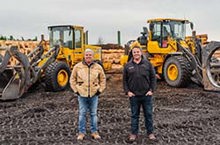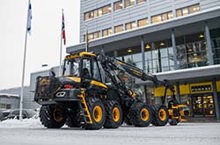
With the increasing use of tethered machines to replace fallers on slopes, on occasion well beyond the original limits of ‘traction assist’, there is high wear and failure at the connection of the shackle/s, wire rope/s or chain/s within the first ten metres from the machine.
While some failures can be identified as ‘mechanical damage’ due to the ropes and chains being picked up by the machine grapple or being worn by dragging over rock faces or even by rubbing against the counterweight as the machines rotate, there are events which are classified as ‘normal wear and tear’ and may be premature failures.
The bow shackle is the most commonly used connection in New Zealand, probably because of the familiarity with bow shackle use on hauler towers, swing yarders and trailer winches.
Guildford Engineering Consultants believes that they are a source of fatigue when used in unlubricated tether connections which could result in premature or potentially catastrophic failure.
The company has been involved in the design and certification of tether winch systems and downhill machine tether connections used in the North Island forests since 2005.
In our Forest Engineering feature this month Director, Denis H Smith, investigates, looking at different systems, suggested solutions, cost-benefits and risk analysis.
To read more, get your copy of the April 2024 edition of NZ Logger magazine, on sale from 1 April. Check the link on this page to subscribe to either a printed or digital copy (or both).










